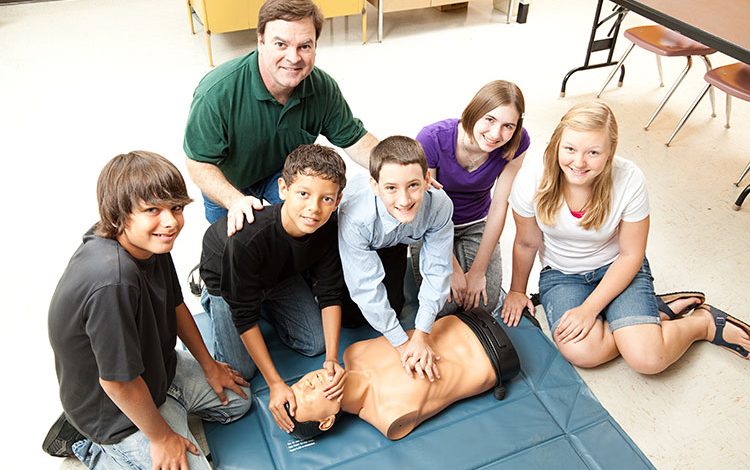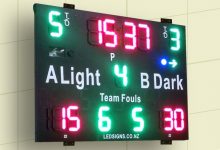Workplace first aid training could save your life

The Health and Safety at Work Act requires school leaders to ensure their learning environments are safe places, ‘so far as is reasonably practicable’, for students, staff, and visitors alike.
This article was written for our Term 4 magazine! Check out your staffroom copy!
While the Act states schools must have the appropriate safety policies, procedures and resources in place to provide an environment that is without risks to safety, accidents continue to happen, and injuries remain common.
Figures released by the Accident Compensation Corporation reveal more than 65,000 students and almost 6000 staff members were injured at New Zealand schools in one 10-month period.
The figures reinforce a need to be diligent when it comes to managing the multitude of health and safety risks associated with running a school and highlight the importance of a thorough first aid policy.
Key to providing appropriate first aid care for your school community is ensuring an adequate number of staff are trained to administer first aid.
How many first aid qualified staff you require depends on the size of your school, but it is important to remember the Act states everybody who is involved with a school has a responsibility for health and safety. The Education and Training Act 2020 does provide a concrete figure for early childhood education centres, stating they must have one first aid qualified person present for every 50 children attending, at all times.
To be recognised as a qualified first aider you must either have a current New Zealand Qualifications Authority (NZQA) approved first aid qualification, be a registered medical practitioner or nurse with a current practising certificate or be a qualified ambulance officer or paramedic.
Nominated first aiders are required to keep their qualifications up to date with a certificate generally valid for two years with a grace period of three months. There is, due to the ongoing coronavirus pandemic, likely to be some flexibility with this grace period to account for people being unable to attend refresher training because of pandemic management plans.
Those staff who have a current first aid certificate or recognised nursing qualification are eligible to receive an allowance if they are a designated first aider in the school.
The cost (up to a maximum of $160) for a designated first aider to obtain or update a first aid certificate is to be paid by the school and staff required to attend a first aid training course can be eligible for paid leave or time in lieu.
There are numerous providers who deliver first aid training for schools but WorkSafe stipulates training must be delivered by an organisation approved by the NZQA.
When considering a course, look for one that covers:
- resuscitation and choking, bleeding, shock, fractures, sprains and head injuries
- hypothermia, burns and poisoning
- medical emergencies, including asthma, diabetes and epilepsy
- CPR (cardiopulmonary resuscitation)
- severe allergic reactions
Another crucial element of a thorough first aid policy is providing first aid equipment that is easily accessible, clearly marked and stored appropriately in dustproof boxes or cabinets or the school’s dedicated first aid room.
The contents of the first aid kits should be replenished at regular intervals and while kits come in all shapes and sizes there are some basic supplies that you should stock.
These include, but are not limited to, bandages, sterile dressings, adhesive wound dressing strips, sterile eye pads, antiseptic liquid, stainless steel scissors and splinter forceps, accident register and pen or pencil, first aid booklet, list of local emergency numbers and disposable gloves.
It is important to remember that the responsibility to provide a safe learning environment extends beyond the school grounds to include any places that are visited for school purposes, such as official excursions and camps.
While the school may not be able to influence and control all of the risks associated with education outside of the classroom activities, it needs to ensure it consults with any external providers to ensure that they are suitably qualified and have robust systems in place for the management of health and safety.
A word from the experts: School News talks to some first aid suppliers…
When it comes to first aid kits, First Training Managing Director Johanna Verheijen recommends that for any EOTC activities, school staff ask the following questions: “Have the students, staff, and helpers filled out an up-to-date health form? For those with medical conditions, what are their triggers? The more information the better. Where is their medication? When do they expect to get better? When do they require medical assistance?”
“First aid certifications should be revalidated every two years to keep up-to-date with any changes and maintain skill and knowledge level. It is one of those things that you hope you will never need and it’s always unexpected.” Johanna adds: “Learning first aid is a life skill and courses give you confidence when it counts, though practical hands on scenarios, that are fun and interactive.
“For Year 11-13 students needing NZQA credits, a Workplace First Aid course covering the 6400, 6401 and 6402 standards is a must and looks really good on a CV. For students and teachers playing in the outdoors then an Outdoor First Aid course is a must. This covers NZQA unit 424.”
Meditrain representative Chris Banks says: “One consideration for schools is that the Workplace course is delivered over eight hours (plus four hours of pre-course work) and therefore does not fit within a single normal school day, whereas the Basic First Aid course is delivered over six hours (plus pre-course work) and therefore can be completed within a single school day.”
The requirements for a first aider travelling with a sports team, he explains, “would be a current first aid certificate and having access to a first aid kit. In terms of first aid supplies, I would suggest beginning with a standard kit and adding extra supplies relevant to a sporting context (for example, ice packs and compression bandages)”.
“There are a variety of different kits available including customised kits and suppliers may also provide a restocking service, sending someone to replace used and expired items. The standard kits provide a good starting point, then people can add additional supplies based on common injuries or any specific risks identified for the school.”









